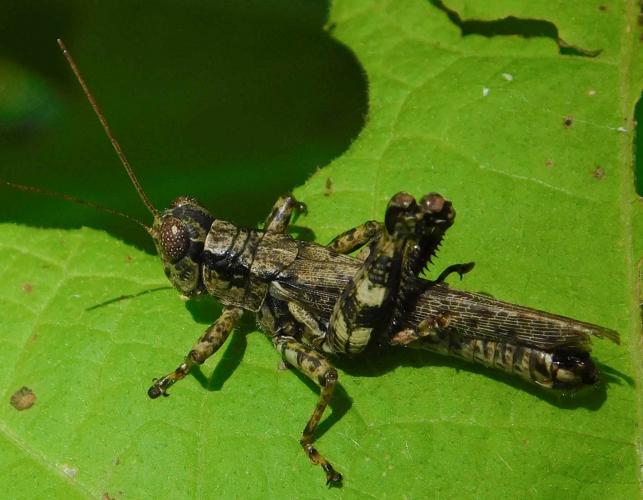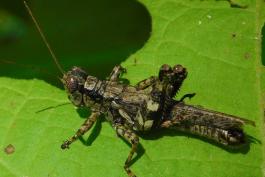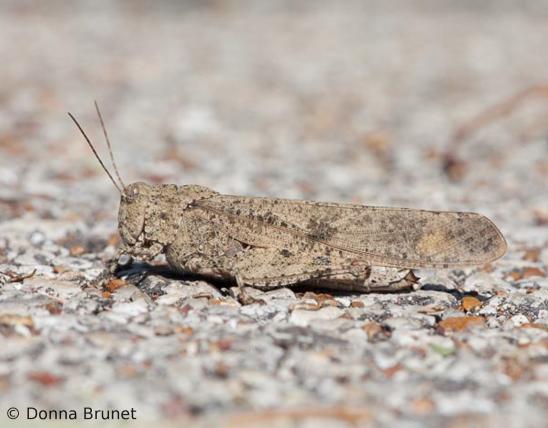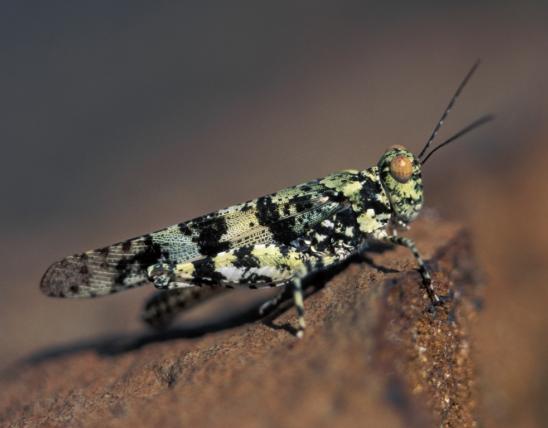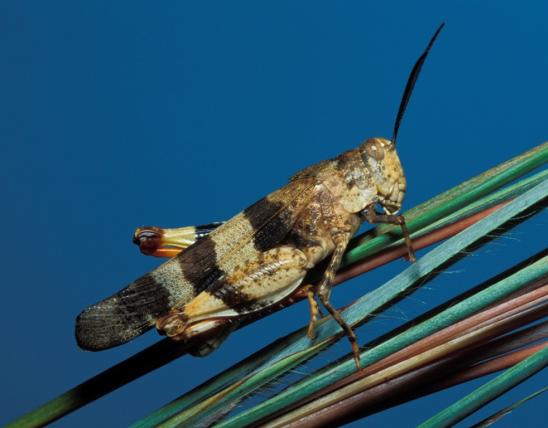
The pine tree spur-throat grasshopper usually lives in wooded areas, where its mottled, brownish-gray camouflage protects it when it rests on tree trunks. The outer surface of the hind femurs (thigh-like segments) are distinctively marked with alternating bands of black and gray; the inner surface of the hind femurs is typically bright red.
This species has a wide distribution in North America and different populations may have various overall tints of olive, rust, gray, or tan.
Males are slightly smaller than females and have the cerci (pair of appendages at the abdomen tip, which generally look like tiny prongs in other grasshoppers) shaped like flattened clubs or boots.
Learn more about this and other short-horned grasshoppers on their group page.
Length: Females to about 1½ inches; males are smaller, only about 1 inch.
Statewide.
Habitat and Conservation
Although most grasshoppers are associated with open, grassy areas, the pine tree spur throat grasshopper usually occurs in wooded areas, including both deciduous and coniferous (pine) woodlands. When these insects rest on tree bark — especially when they are up in the canopy munching on tree leaves — they are difficult to see, but when they alight on a green leaf near the forest floor, they are conspicuous. Similarly, if you live in or near a wooded area, you may find one of these grasshoppers resting on your car or the side of your house.
Food
Pine tree spur-throat grasshoppers eat the leaves of trees.
Life Cycle
Females deposit their eggs in bark crevices of tree trunks.
